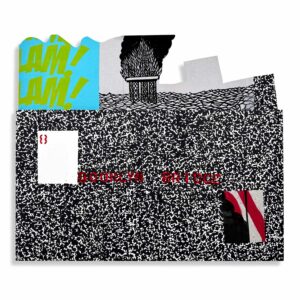I’ve collected coincidences for ten years.
It started when I read two books in a row that both included the phrase “antique dental instrument.” While that was not the first coincidence I ever noticed in my reading, that singular instance convinced me to keep a record. I began to consider that the phrase might have been the profound masquerading as the mundane. Or not. But I wanted to collect the data.
I cataloged my coincidences in composition books that filled rapidly. As it turned out, “antique dental instrument” has not held any special meaning in my life or my art. Neither have any of the coincidental phrases that followed, such as “stuffed mountain lion” or “black currant lozenge,” but the act of noticing them became the lens through which I filter the world and my experiences.
As an ardent reader, I naturally gravitate toward creating books and printing. And taking note of coincidences is akin to the kind of observation a landscape or portrait artist practices. Thus, my observations take the form of hand-stitched texts that I call Common Threads. Sewing every line, letter, and illustration in the books enhances their status as objects. By laboring over a dime store composition book, painstakingly recreating it by hand, I have found a way to express the insignificant as potentially philosophical.
Just as a landscape or portrait painter’s observations allow them to reproduce a version of reality, my scrutiny of repetition creates a narrative that navigates fictional universes. Studying coincidence led me to other speculative areas of science and the paranormal. My work customarily explores the aesthetic and narrative possibilities of crop circles, secret societies, and alchemy. This interest in pseudoscience developed into an alternate version of string theory to explain the occurrence of coincidence.
Most of my projects take the form of books or a series of prints as each represents an inquiry or sustained reflection on a given subject. Like the patterns on the covers of composition notebooks, patterns in fictional universes can go unnoticed without the care of sustained scrutiny. I just happen to be the one paying attention.
-Candace Hicks

Website
Instagram
In Collection:
The University of the Witwatersrand, Wits Art Museum (WAM), Jack Ginsberg Centre for Book Arts
Common Threads V. 117




